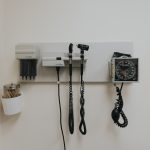Share
Are you up to standard? The importance of planning for unforeseen absences
Back to MessengerRead time: 2 minutes
Between pandemic workloads, healthcare provider shortages and flu season, you may find yourself away from your practice unexpectedly. Unfortunately, investigation reports, test results and consult follow-ups continue to come in, and someone needs to be available to review and action urgent items.
Clause 7 of the Continuity of Care standard requires all regulated members to:
- enter into an agreement with an appropriate healthcare provider or service to provide ongoing care during periods of unavailability, ensuring appropriate handover to manage outstanding investigations/results, outstanding referrals or consultation reports, and any follow-up care required as a result;
- have a plan or coverage in place that allows other healthcare providers to communicate or request information pertaining to patients under their care during a temporary absence; and
- inform patients who have a reasonable expectation of ongoing care of the arrangements in place during the absence.
Having a contingency plan in place will help mitigate risk of harm to patients
Contingency planning involves identifying and monitoring the risks, vulnerabilities and capacities of your practice location(s)[1]. You should consider access to patient records, clear messaging on office hours, alternative sources of care and what patients should do in an emergency. Additional considerations include office staff and general office/business-related matters.
Any correspondence that would normally come to your attention (e.g., phone messages, faxes, EMR alerts, consult reports, mail) must still be adequately addressed
Contingency plans may look different based on the type of practice and the practice location—whether in a rural or urban setting. We understand it can be challenging to find coverage, particularly with short notice, which is why having a plan in place beforehand is important. You can work with colleagues in the same or neighbouring towns or work with AHS or PCNs to establish a contingency plan.
Please refer to CPSA’s Continuity of Care Advice to the Profession document for more information.
| Advice to the Profession documents update
We have updated the Closing or Leaving a Medical Practice (see “Continuity of Care” on page 4) and Continuity of Care (see “Contingency Planning” on page 12) Advice to the Profession documents to address issues with standing lab orders when physicians close their practices and the patient does not have a new healthcare provider. The Referral Consultation Advice to the Profession document has also been updated to provide context regarding requests received from healthcare providers who are not physicians (see “Referrals from other healthcare providers must be considered” on page 6). Additional clarification has been added regarding timeliness of consult reports (see “Reporting to the referring practitioner” on page 10). |
Questions or comments? Please email support@cpsa.ab.ca
[1] From The World Health Organization’s Guidance for Contingency Planning.
Related News
All News & EventsDecember 8, 2022
Are you up to standard? The importance of planning for unforeseen absences
December 8, 2022
Continuing Competence at CPSA
December 8, 2022
Continuing medical education and professional development opportunities – December 2022
December 8, 2022
























Comments for this post are now closed. If you would like to share your feedback on this topic, please email support@cpsa.ca.